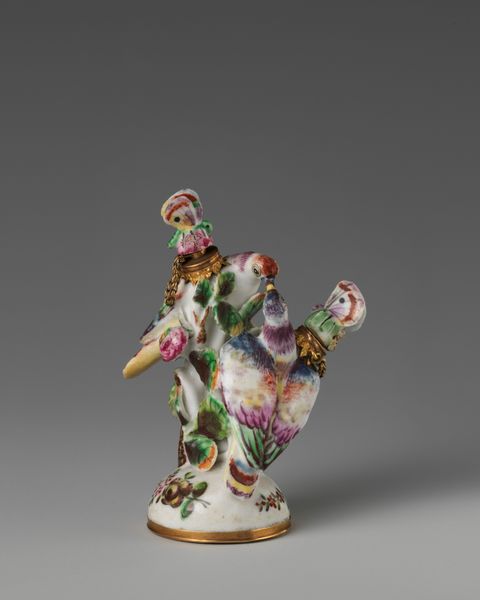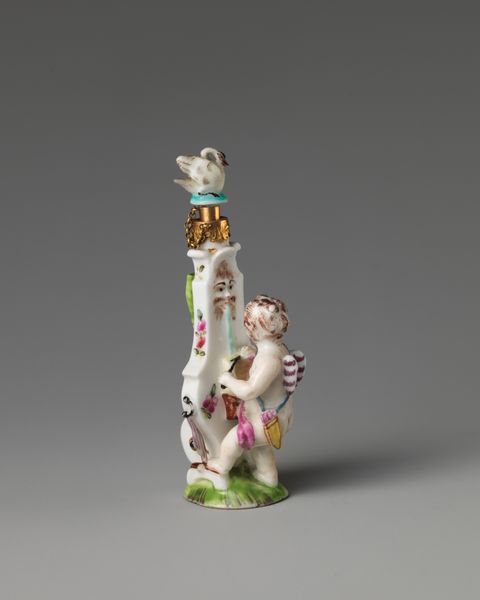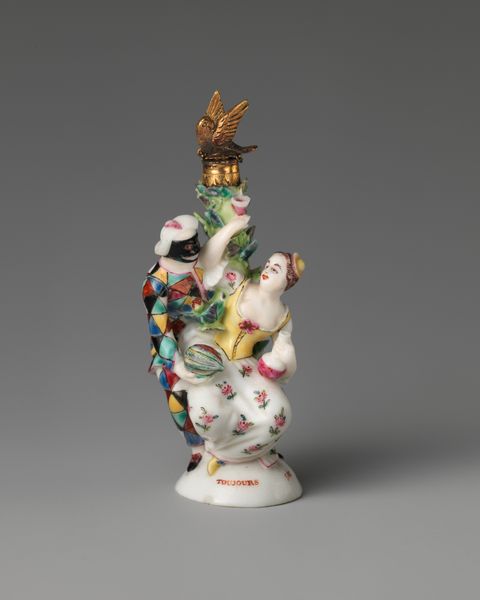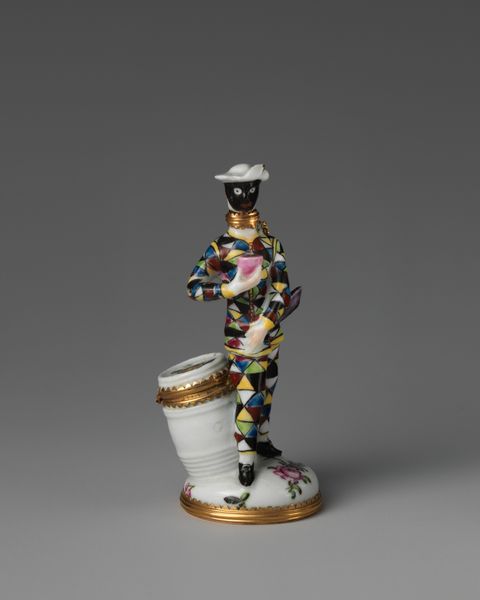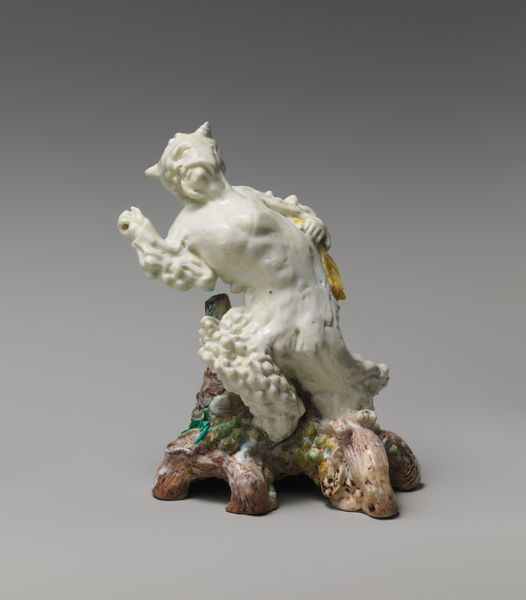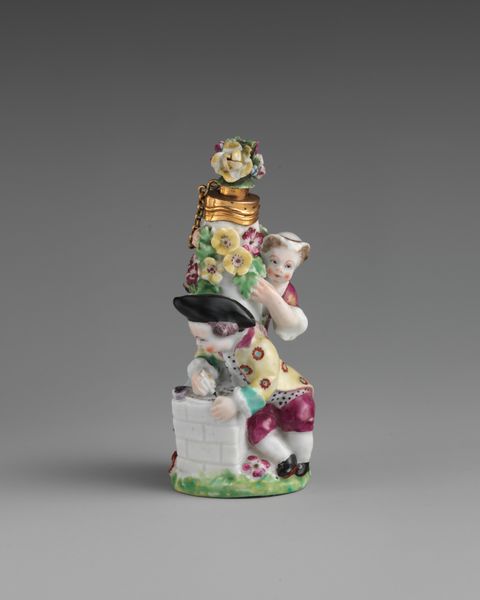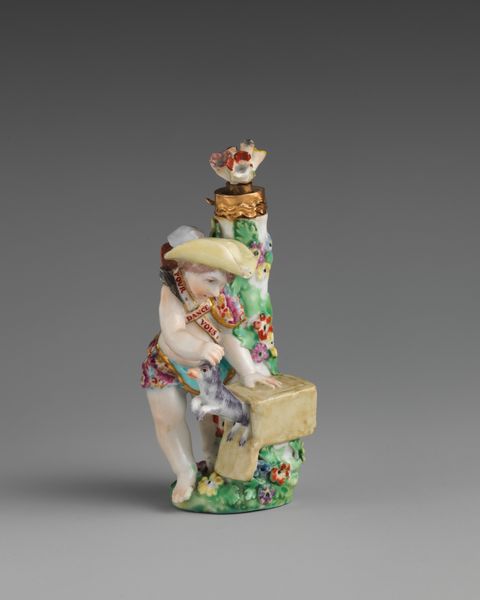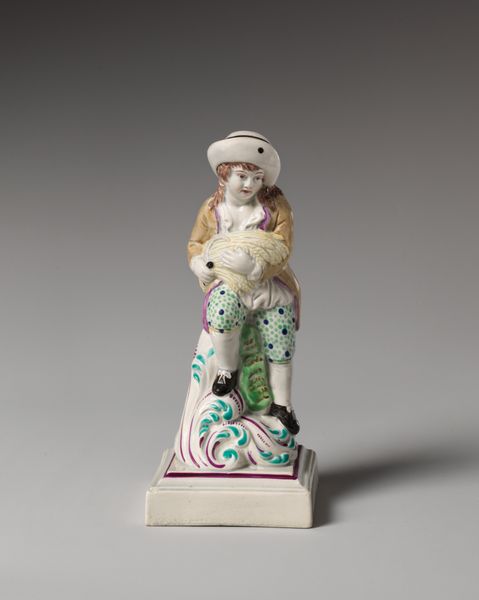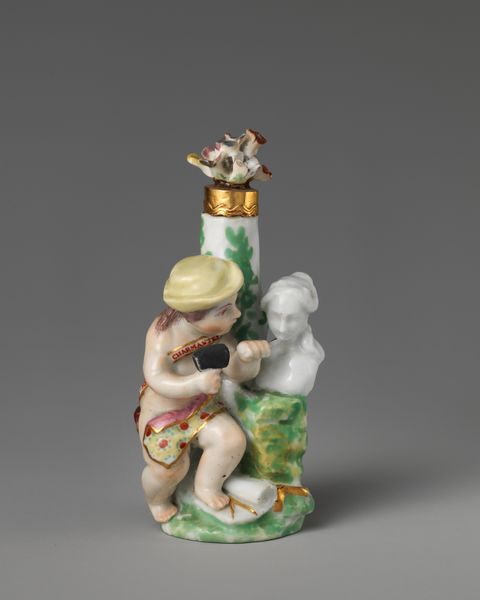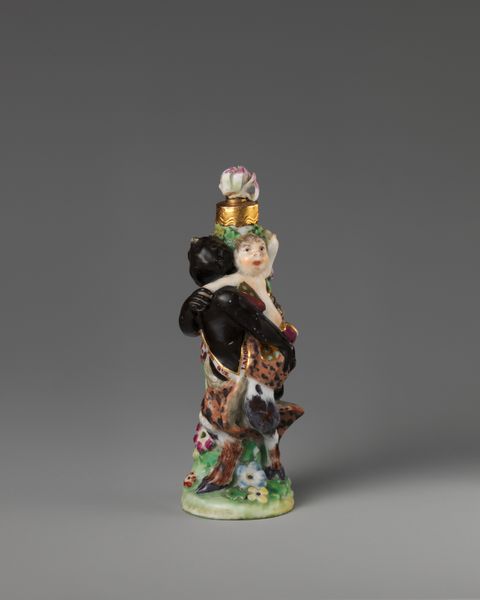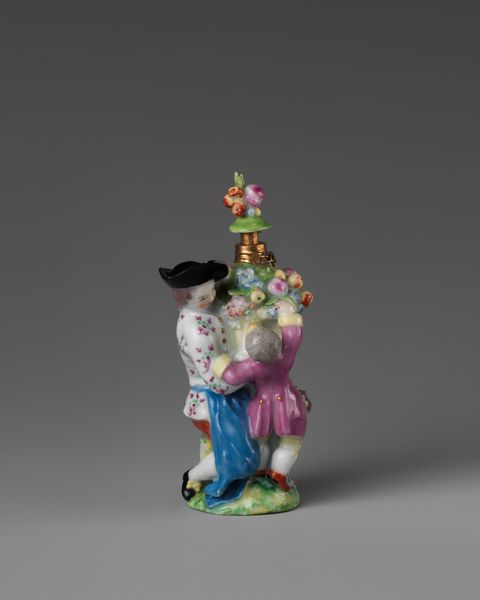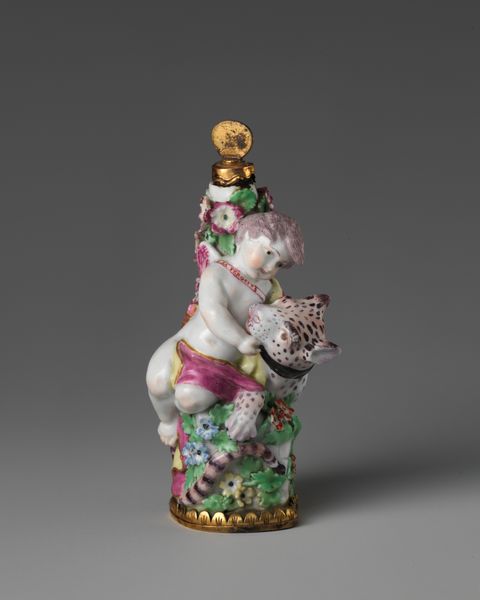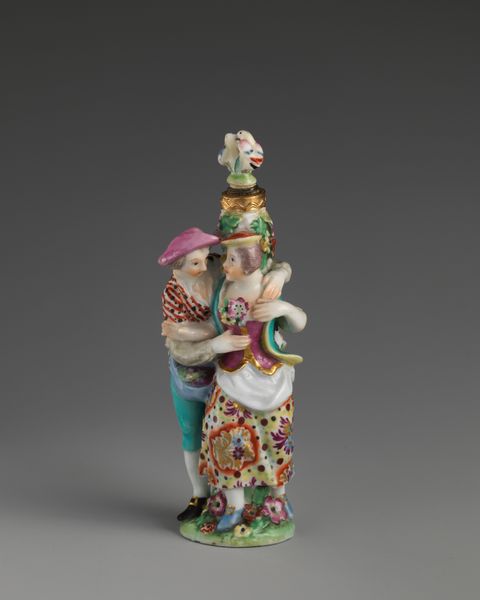
ceramic, porcelain, sculpture
#
ceramic
#
porcelain
#
figuration
#
sculpture
#
decorative-art
#
rococo
Dimensions: 3 3/8 × 2 in. (8.6 × 5.1 cm)
Copyright: Public Domain
Curator: How delightful! Just look at this porcelain figure of a Harlequin, believed to be produced by the Chelsea Porcelain Manufactory sometime between 1750 and 1760. It is now held in the collection of the Metropolitan Museum of Art. Editor: My first thought is of theatre and disguise. He seems poised mid-performance, his colourful costume a vibrant contrast to that enigmatic black mask. There's a real sense of playful energy emanating from the figure. Curator: Absolutely. The Harlequin character, drawn from the Italian commedia dell’arte tradition, gained immense popularity throughout Europe, including England. It represented, in many ways, a safe way to deliver biting social commentary and challenge conventions through humor. It served a valuable role in public life. Editor: And that diamond-patterned suit has become so iconic, instantly recognizable. The colors, the arrangement...it speaks to the Harlequin's nature: multifaceted, playful, perhaps a little deceptive. Is there a reason why it looks as though he is leaning against a broken tree stump? Curator: Those porcelain factories often incorporated classical imagery in surprising ways. The broken tree trunk, besides offering a physical support for the sculpture, serves as a ‘memento mori’, or a reminder of the brevity of life even amidst festivity. The Harlequin here, with his exaggerated gesture, might just be winking at our shared mortality. Editor: Interesting. I see now how those roses on the stump also point toward vanity and the ephemeral nature of beauty and youth. The artist does not shy away from imbuing an everyday theatrical scene with multiple layers of meaning. Curator: The artistry here is remarkable. The ceramic material is sculpted into something far more playful than mere representation, with allusions that serve to emphasize a more profound cultural meaning. Editor: I leave with a renewed appreciation for the seemingly simple characters, the enduring power of symbols, and their capacity to be more than simply what appears on the surface. Curator: Indeed, it’s through studying pieces like these that we glimpse the multifaceted connections between art, entertainment, and social dialogue of a specific moment.
Comments
No comments
Be the first to comment and join the conversation on the ultimate creative platform.
